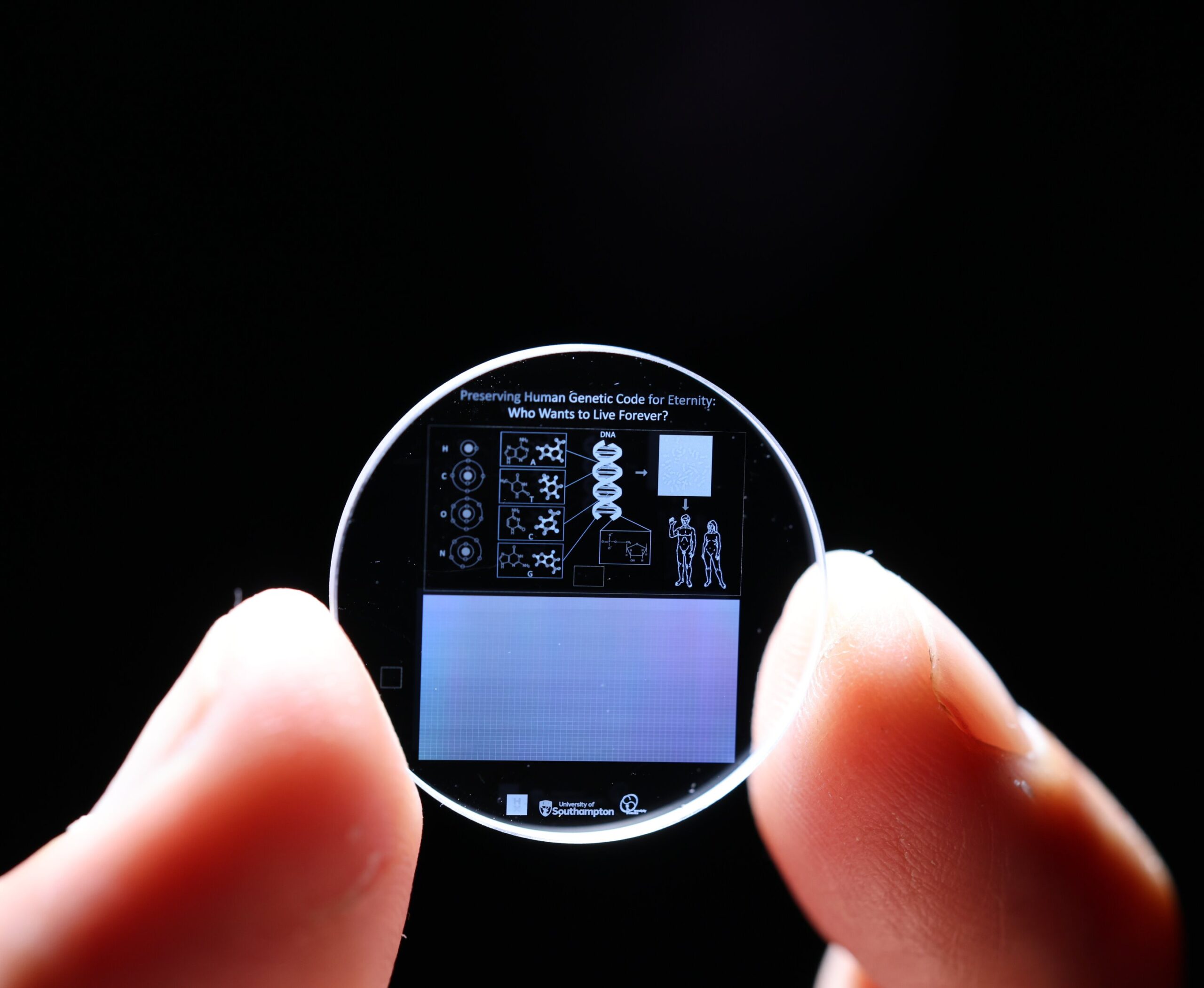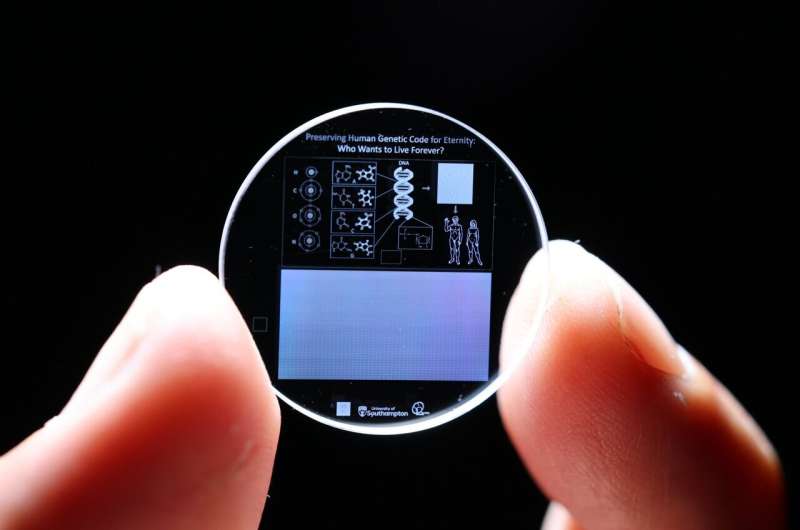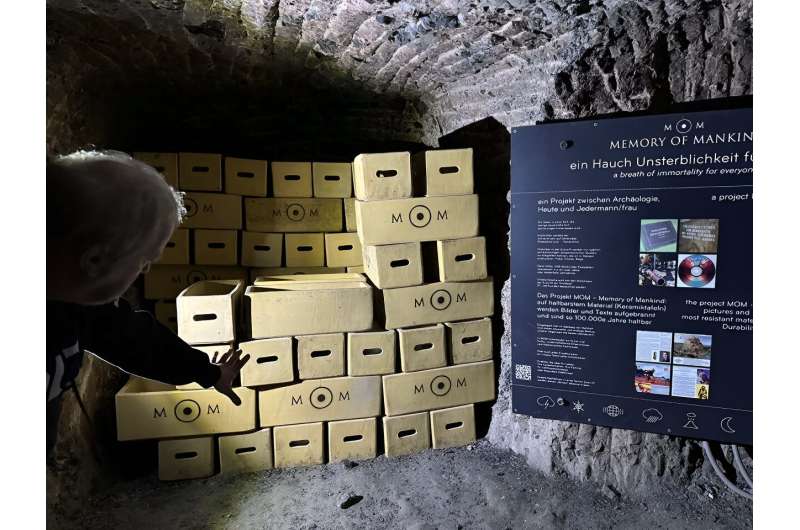

University of Southampton scientists have stored the full human genome on a 5D memory crystal—a revolutionary data storage format that can survive for billions of years.
The team hope that the crystal could provide a blueprint to bring humanity back from extinction thousands, millions or even billions of years into the future, should science allow.
The technology could also be used to create an enduring record of the genomes of endangered plant and animal species faced with extinction.
Eternity crystals
The 5D memory crystal was developed by the University of Southampton’s Optoelectronics Research Center (ORC).
Unlike other data storage formats that degrade over time, 5D memory crystals can store up to 360 terabytes of information (in the largest size) without loss for billions of years, even at high temperatures. It holds the Guinness World Record (awarded in 2014) for the most durable data storage material.
The crystal is equivalent to fused quartz, one of the most chemically and thermally durable materials on Earth. It can withstand the high and low extremes of freezing, fire and temperatures of up to 1,000°C. The crystal can also withstand direct impact force of up to 10 tons per cm2 and is unchanged by long exposure to cosmic radiation.
The team at Southampton, led by Professor Peter Kazansky , use ultra-fast lasers to precisely inscribe data into nanostructured voids orientated within silica—with feature sizes as small as 20 nanometers.
Unlike marking only on the surface of a 2D piece of paper or magnetic tape, this method of encoding uses two optical dimensions and three spatial co-ordinates to write throughout the material—hence the “5D” in its name.
Restoring species
The longevity of the crystals means they will outlast humans and other species. Currently, it’s not possible to synthetically create humans, plants and animals using genetic information alone, but there have been major advances in synthetic biology in recent years, notably the creation of a synthetic bacterium by Dr. Craig Venter’s team in 2010.
“We know from the work of others that genetic material of simple organisms can be synthesized and used in an existing cell to create a viable living specimen in a lab,” says Prof Kazansky.
“The 5D memory crystal opens up possibilities for other researchers to build an everlasting repository of genomic information from which complex organisms like plants and animals might be restored should science in the future allow.”
To test this concept, the team created a 5D memory crystal containing the full human genome. For the approximately 3 billion letters in the genome, each letter was sequenced 150 times to make sure it was in that position. The deep-read sequencing work was done in partnership with Helixwork Technologies .

Visual clues
The crystal is stored in the Memory of Mankind archive—a special time capsule within a salt cave in Hallstatt, Austria.
When designing the crystal, the team considered if the data held within it might be retrieved by an intelligence (species or machine) that comes after us in the distant future. Indeed, it might be found so far into the future that no frame of reference exists.
“The visual key inscribed on the crystal gives the finder knowledge of what data is stored inside and how it could be used,” says Prof Kazansky.
Above the dense planes of data held within, the key shows the universal elements (hydrogen, oxygen, carbon and nitrogen); the four bases of the DNA molecule (adenine, cytosine, guanine and thymine) with their molecular structure; their placement in the double helix structure of DNA; and how genes position into a chromosome, which can then be inserted into a cell.
For a visual indication of which species the 5D memory crystal relates to, the team paid homage to the Pioneer space craft plaques which were launched by NASA on a path to take it beyond the confines of the solar system.
“We don’t know if memory crystal technology will ever follow these plaques in distance traveled but each disk can be expected with a high degree of confidence to exceed their survival time,” adds Prof Kazansky.
Provided by
University of Southampton
Citation:
Human genome stored on ‘everlasting’ memory crystal (2024, September 19)
retrieved 19 September 2024
from https://phys.org/news/2024-09-human-genome-everlasting-memory-crystal.html
This document is subject to copyright. Apart from any fair dealing for the purpose of private study or research, no
part may be reproduced without the written permission. The content is provided for information purposes only.